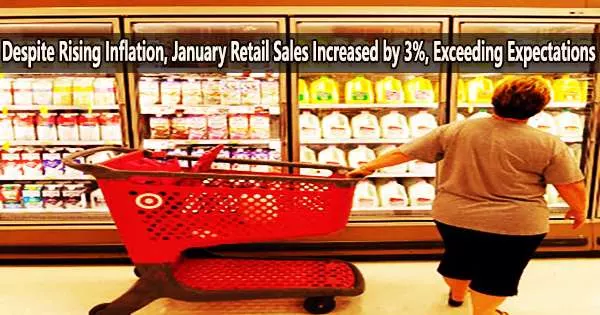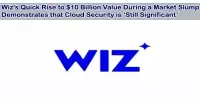Retailer sales increased significantly more than anticipated in January (2023) as consumers persisted despite escalating inflationary pressures.
Advance retail sales for the month increased 3%, compared with expectations for a rise of 1.9%, the Commerce Department reported Wednesday. Excluding autos, sales rose 2.3%, according to the report, which is not adjusted for inflation. The ex-autos estimate was for a gain of 0.9%.
Food services and drinking places surged 7.2% to lead all major categories. Dealers in automobiles and auto parts experienced a gain of 5.9%, while retailers of furniture and home decor had an increase of 4.4%.
Even with a 2.4% increase in gas prices, receipts at service stations were flat. Online retailers saw an rise of 1.3%, while electronics and appliances stores increased 3.5%.
No categories saw a decline, following a December in which sales fell 1.1%.
On a year-over-year basis, retail sales increased 6.4%, which was exactly in line with the consumer price index move reported Tuesday.
Markets moved lower after the news, with major indexes slightly lower in morning trade.
Further economic news Fed statistics released on Wednesday revealed that industrial production was unchanged in January despite expectations for a 0.4% increase.
I am confident that the gears of monetary policy will continue to move in a way that will bring inflation down to 2%. We will stay the course until our job is done.
New York Fed President John Williams
Utility spending fell by 9.9%, most likely as a result of the exceptionally warm start to the year, while manufacturing input increased by 1% and mining production increased by 2%. Also, capacity utilization declined 0.1 percentage point to 78.3%, below the 79% estimate.
“The monthly reports on industrial production, retail sales, and jobs were generally better than expected and point to a pickup in economic activity in early 2023 after a soft patch in late 2022. The Fed will read recent activity reports as supporting plans for additional interest rate increases in the first half of this year,” said Bill Adams, chief economist for Comerica Bank.
Inflation as gauged by the consumer price index accelerated by 0.5% in the first month of the year, the Labor Department announced Tuesday. The sales report shows that despite significant inflationary pressures, consumers kept on spending.
The Federal Reserve is battling increasing prices that seem to be slowing down but are still substantially above than its 2% annual target as the data comes out.
Several Fed officials spoke Tuesday, each indicating that while they see some progress being made, there is still more work to do.
“I am confident that the gears of monetary policy will continue to move in a way that will bring inflation down to 2%. We will stay the course until our job is done,” New York Fed President John Williams said.
At its upcoming two meetings, the Fed is anticipated by the markets to approve quarter-point interest rate increases before pausing to evaluate the effects of the changes in monetary policy on inflation, the labor market, and overall economic growth.
Consumer spending makes up about two-thirds of all economic activity in the U.S. Fed rate increases are aimed at reducing demand as supply tries to catch up and to hit rate-sensitive sectors such as housing, which saw a boom during the Covid pandemic.
There is indication that the hikes are having an effect, but inflation is still a problem and could become worse due to China’s economic reforms and Europe’s recovering economic development.
















